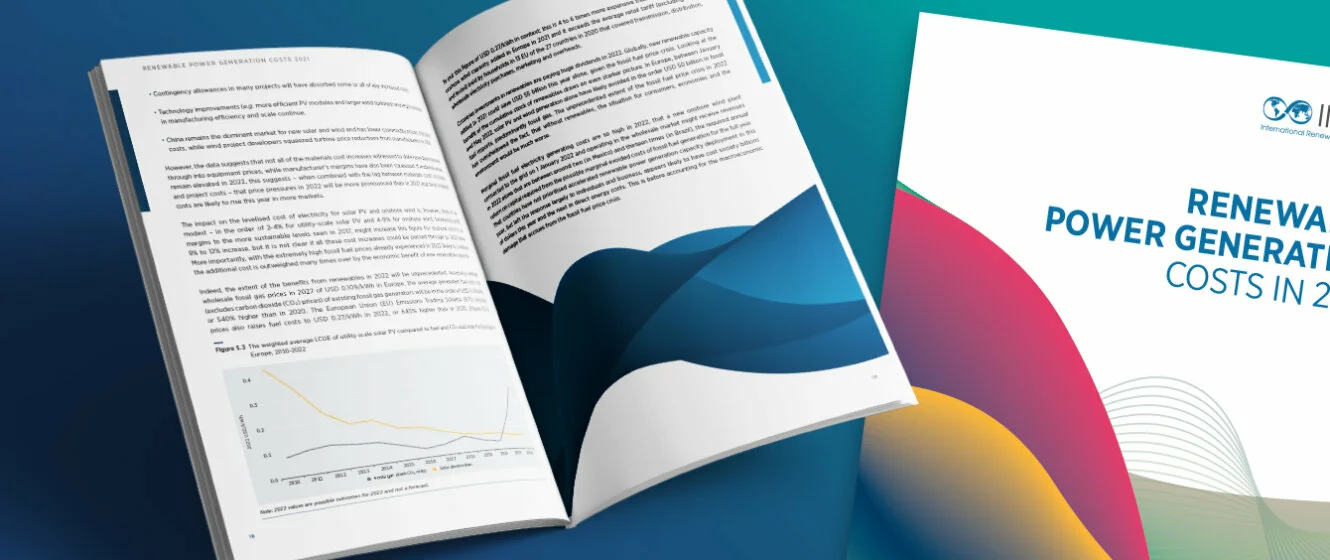Lazard’s annual Levelized Cost of Electricity (LCOE) series provides a good guide to the historical cost trajectories of different energy technologies. The latest edition, published in October last year, showed that onshore wind and utility-scale solar PV provided the lowest-cost electricity, below any form of fossil fuel use.
This is backed by the International Renewable Energy Agency (IRENA), which in a report published in July, said that, in 2021, as fossil fuel prices rose, the cost of onshore wind fell 15%, while both offshore wind and solar PV costs dropped 13%, compared with 2020.
Director-General of IRENA, Francesco La Camera, was unequivocal, saying: “renewables are by far the cheapest form of power today.”
2022 cost pressures
Nonetheless, the agency warned that supply chain challenges and rising raw material costs had yet to show their full effect. In 2022, these factors are having an impact.
A study by Bloomberg New Energy Finance (BNEF), published at the end of June, found that the global LCOE for onshore wind and utility-scale solar PV rose in the first half of this year, putting prices back to 2019 levels. The reasons cited were increased costs for materials, freight, fuel and labour.
However, fossil fuel prices have risen even faster. The study found that, per MWh, onshore wind and solar PV were about 40% cheaper than new coal or gas-fired power plant. In the current energy crunch, renewable energy has increased its cost advantage relative to fossil fuels, according to BNEF, despite facing headwinds which have led to some cost increases.
Multiple variables
Costs for different energy technologies depend on a multitude of factors, including, for example, regulation, fuel prices, interest rates and location.
The LCOE of a solar panel in Norway, for example, is likely to be higher than one located in Portugal for the simple reason that Norway has less sunlight and the panel will generate less electricity. The studies mentioned above look at a global LCOE, which averages out the differences across locations.
The regulatory environment surrounding energy project development and developers’ expectations regarding technology improvements also have a big impact.
The UK’s Round 4 award for renewable energy, for example, returned bids for offshore wind lower than onshore wind and solar PV, yet few people, if any, would claim that offshore wind is the cheaper technology today. However, in the mature market context of the UK, developers believe they will be able to build offshore wind farms in coming years at the record low prices offered in Round 4.
Sustained cost gains
Gas and coal-fired combustion are mature technologies, which have pretty much reached the limits of their efficiency, but costs still vary because of the volatility of fossil fuel prices.
Wind and solar, in contrast, are not exposed to fuel costs during operation and continue to benefit from technology gains, for example from larger turbine sizes and ever higher records for solar cell efficiency, which spill over into commercial deployment.
In the period 2009-2021, gas-fired generation costs, using a combined cycle, fell 27%. Much of this decline will have been reversed by the increase in gas prices from fourth-quarter 2021. Coal-fired generation, for which prices have also risen in the last nine months, declined by only 3%. Nuclear costs rose 36% to become one of the most expensive forms of power generation, according to Lazard.
In contrast, renewables performed much better: wind costs fell 72% and solar 90%.
Levelise cost of energy comparison - historical utility-scale generation comparison
mean LCOE in $/MWh, source: Lazard LCOE Analysis - version 15.0Long-term potential
BNEF says the current rise in prices for renewables is a “rough patch” rather than an inflection point — renewable energy costs are likely to return to their long-term downward trajectory as demand remains strong, supply chain pressures ease and more production comes online.
They are not alone in this belief. The US Department of Energy (DoE) has a programme underway, Sunshot 2030, which aims to cut the cost of solar PV to just $0.03/kWh by 2030, the industry having achieved the DoE’s 2020 target three years ahead of scheduled in 2017.
Similarly, IRENA sees the global LCOE of onshore wind falling from an average 0.06/kWh in 2018 to just 0.03-0.05/kWh in 2030 and 0.02-0.03/kWh in 2050, while the prices returned for offshore wind in the UK’s Round 4 speak for themselves.
Already the cheapest source of electricity today, renewable energy, it appears, has huge potential to become even cheaper tomorrow.
